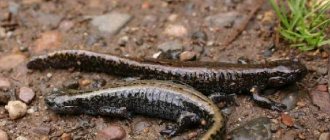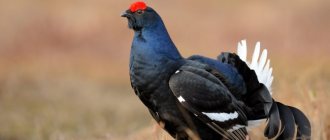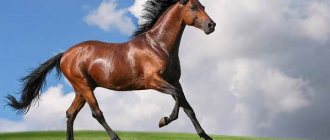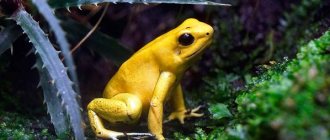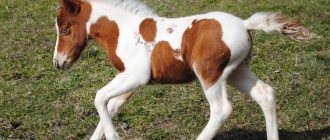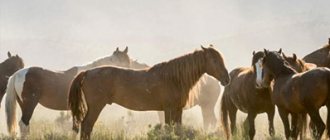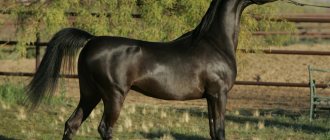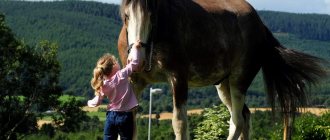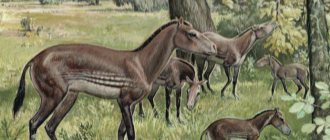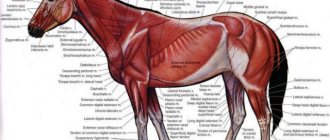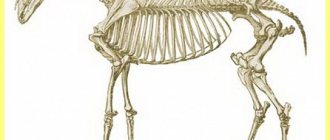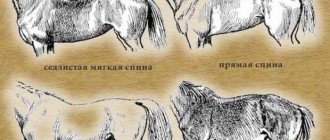Probably the most common use of the word "gray" in simple colloquial vocabulary occurs in combination with the nouns "mare" or "gelding" (the latter denoting a castrated stallion).
If you don’t know what characteristic the adjective expresses, it’s absolutely unclear why these poor animals stood out so much among their other relatives, deserving such frequent mention. What does the word "gray" mean? Is this a feature of appearance or physical condition? Perhaps such an animal should be pitied or, conversely, feared?
Description and varieties
Horses of this color come in different breeds, which leaves an imprint on their appearance and behavior. They are united by genetics. Suit is several special external characteristics. This includes not only colors and their combination in areas of the body, but also shades of skin and eyes.
Therefore, horses that seem different at first glance are classified as red. Common signs include:
- Wool color. The red color combines a significant number of shades: chestnut, beige, apricot, brown and derivatives.
- The tail and mane differ in color intensity from the body. They can be either darker than the body or lighter.
- Legs are the same as the body. The lower parts are sometimes lighter.
The shades, especially of the mane and tail, change with the seasons. Age also affects coloration.
Many have tan markings - lighter areas. They are found:
- on the body or “shirt”;
- at the end of the muzzle;
- in the groin area;
- on the hips - behind and on the inside;
- near the eyes.
Light areas on the lower abdomen are called underbelly. More often found in breeds bred for a specific area or region (aboriginal).
Red horses are often confused with bay horses. The body color really is the same. The difference is in the color of the legs:
- in bays they are black up to the hocks;
- in redheads it is the same color as the body, sometimes lighter below.
There are varieties within the suit - undertones and subsets:
- Buraya . The darkest shade of red. It's almost a brown, chocolate color. The tail and mane sometimes appear almost black. In this case, the body and legs are lighter. They are distinguished from dark bays by the lower part of their limbs.
- Igrenevaya. These are classic red or brown horses. The mane and tail are white or smoky, with partially gray hair.
- Solovaya . The wool here is yellowish. Saturated shades appear golden-reddish. The tail and mane are white. Sometimes they are yellowish: the same as the body, or a little lighter. In some cases, there are darker stripes on the legs. Nightingale horses are confused with golden-brown (bay) horses.
- Isabella . The coat color is cream, the color of baked milk. The horses seem far from being red. In fact, it is the same color, but extremely lightened. The skin here is pink, which is rare for horses. Blue eyes.
Igrenovaya
Buraya
Solovaya
Isabella
Bulanaya
The dun horse has a sandy-yellow body color, black mane, tail and lower legs. The eyes of horses of this color should be brown or amber. Shades of body color vary from almost white sand to dirty yellow. The lower part of the legs may not be pure black, but with a brown tint. On the spine of dun horses you can often see a black stripe - a “strap”.
The dun color is a derivative of the bay color. It arose due to the influence of the horse pigment illuminator gene. The color is typical for Akhal-Teke horses.
Genetics
When breeding, the selection rules are taken into account. Special pigments determined by genetics are responsible for the transmission of color. Gray color in horses at the genetic level is the strongest. In biology, such a trait is called dominant. The red color is “inferior” to it, that is, it is recessive. If a parent has a gray color, the children often look like him. The red color is obtained thanks to the protein pheomelanin.
The gene responsible for the “fiery” color is present in all breeds. It sometimes appears even after several generations. For example, chestnut foals are born to black mares and bay stallions because their ancestors had the gene responsible for the presence of pheomelanin.
If one of the parents is fiery and the other is not, the color of the offspring is difficult to know in advance, because the combination of genes is unpredictable. To obtain a suit, as a rule, parents of the same color are crossed.
Among the varieties of red color, game and isabella horses are less common. For this coloration, the Flaxen and Cremello genes must be expressed, respectively.
Characteristics of mousey horses
Mouse horses are distinguished, first of all, by the peculiarities of the shade of their coat. If the gray color is created as a result of mixing light and dark hairs, then the mouse color is distinguished by the presence of monochromatic hairs of an ash or golden hue.
This amazing coloration is one-color, although the head and mane with tail are usually darker than the body.
Another feature characteristic of the mouse color is the dark belt running along the line of the back.
The influence of red color on character
Since ancient times, people have tried to find a connection between the color of a horse and its behavior. Some peoples believed that red horses had a grumpy character. The Arabs especially did not like them.
Nowadays, it is not customary to look for a connection between suit and character. It is believed that temperament and character are influenced by:
- Breed. But it is difficult to establish a direct relationship here, because almost every variety can have red representatives.
- Features of a particular animal. These qualities are inherited from parents and shaped by the environment. Much depends on living conditions and the behavior of the owner.
In both cases, the horse's red color does not play a role. Some people apply the saying to horses: “Whatever you call a ship, that’s how it will sail.” Although it is customary for professional breeders to name a horse based on the nicknames of its parents. If the animal does not participate in selection, you can dream up. Red pets are given nicknames like Rusty, Zorro, Chubais, Bucephalus or the like. People believe that this changes the pet's character in the right direction.
The warmest nicknames
Sometimes, when choosing a name for their pet, their owners want to convey their love for them in this way. This is how nicknames with a particularly “warm” meaning appear:
- Atsuko (Japanese - warm);
- Burushka;
- Dove;
- Bunny;
- Star;
- Krasava;
- Cutie;
- Lovely;
- Smart girl.
Burushka on vacation
Breeds with this color
Red horses can be found among heavy draft horses, horses, and ponies. There is probably no breed where “fiery” horses are not born from time to time. Among some species, red individuals are rare. For other breeds this color is the main one.
Budennovsky horses
The horses have a classic bright red color and look impressive. Among the domestic breeds, the most famous is the Budenovskaya, most of whose representatives have a fiery color.
The breed was bred in the middle of the last century for the army. Horses were intended not only for cavalry attacks, but also for transporting goods. Today Budennovsk horses are used only as riding horses, in sports.
Representatives of this variety are universal. They are used in many competitions, for example, dressage, show jumping, and eventing. It is relatively inexpensive to maintain Budyonnovsk residents. They are unpretentious and hardy.
These are tall, strong horses. Some stallions are taller than 170 cm, mares (uterus) are up to 178. The body constitution is broad-boned and large.
The red color comes in different shades: from the pale color of river sand to reddish brown. All bases are characterized by a special golden tint.
Akhal-Teke horses
Horses of this breed are also red, but more often they are bay, which is often confused with fiery. Among the horses of the Akhal-Teke breed:
- 11% have a classic reddish color;
- 5% belong to the salt variety;
- 2.5% - to isabella.
Akhal-Teke horses of any color have white markings on their faces and legs.
Red sky argamaks are typical horses. Slender, tall, hardy and temperamental. Previously used in war, today - in sports. The horses are loyal and very attached to their owner, and are unpretentious in maintenance.
Akhal-Teke dogs have a yellowish tint to their fur. It is no coincidence that in ancient times they were called “golden horses.” Breeders worked on both breeds during Soviet times.
Suffolk horses
There are a lot of red ones among the heavy trucks. A good example is the Suffolian breed. These horses are almost always red. The livestock is almost entirely of this color. Only the shades differ.
The breed was bred in Great Britain no later than the 16th century. Horses have a calm character and are well suited for agriculture. Suffolk is considered one of the best draft draft horses.
These horses eat little and work a lot. They mature quickly - already at two years they are ready to work in harness. Stallions work almost their entire lives, mares give birth: at least twenty years.
How to name a horse stallion boy and girl beautifully: the most unusual names
Can't find a popular and cool name for stallions? Only the best of all kinds of English, Russian, Japanese and French names for stallions. This list will help you decide on a suitable name for your stallion and will help you choose the coolest, most original and popular nickname.
The most common names for stallions are Japanese, Russian, German, English and French names. This list contains similar names.
Also see other articles on our website. Only the best and most original names for animals.
The coolest and best (TOP 50)
Cola Mister Whiskers Faraoeland Ariel Eva Glory Tea (cheerful, happy) Brutus Noldi Michelin Gold Josie Utrish Copper Riva (returning to life) Reynard Penka Anchor Tavi Oladushek Tomato Nelson Inessa Anchor Yanko Oshin Dantey (deed, decision) Isolde Alice Lux My Lord Mir Pompett Ciel (heaven) Dantei's whim (deed, decision) Elinor Shiji (friendly support) Fumio (smart, smart child) Aya Rolf Gerrault Hyde Hermione Pensy Ram Finbar Silva Georgia Hermogene Citadel
Simple and easy
Cadle Kenneth Nevermore Raiden Pokey Yuna Dukan Sylvester Kirill Temnushka Rafik Centurion Shkodnik Gia Yupik Blue Soot Melisa Adrian Hazel Grouse Sheldon Khasi (bunny, bunny.) Uverto Umka Umberto Eco-Tutius Squid Rory House Arma Zola Asura Jacob Hennessy Cyrus Lor Valeria Server Lindon Tatti Apri Raik Gret Taisan
Beautiful
Gabriel Hottabych Adagio Yuji Aaron Damphis Aragorn Orroen Amphitaire Galatea Paula Zena Suzuki Silver Azalea Erofey Alfredo Talmir Karisha Doble Rzhevsky Amaretto Tiana Harmon Picker Thresh Leo Dour Jacob/Sheamus/Seamus (invader) Vassanta Esa Emperor Hyland Jaromir Jella Marshal Nereid (sea) Pepper Lloyd Val ora (precious) Isley Merita (praise) Chaira Infant Charvel Oldie Dollar
Cool and funny
Emmanuel Nishtyak Fidget Xu Nexus Accident Zipper Nimble Izumi (stream) Panochka Moore Dias Edra Easy Glasha Hippocrates Trampoline Belusik Badger Orti Charlita Avdey Hessi Belyash Ognez Octavius Tessa Challenger Meteor Paul Vobla Dolce Senga Ortan Life Shu Nurse Ganjubas Caliber Ledger Ulyan Gelik Consul
Popular
Hiron Edgard Mirlan Dandy Corporal Ollon Peyton Palermo Nathan Ditmar Dosia Bump Shikka Pride Kayvan (capable, wonderful) Vince Stesha Hakim (wise) Rasha Mor Alfie Yung Minna Gilles Isidora William Zotik Cassis Corkscrew Jean Luc Pikai William Shakespeare Mona Zafira Barsi
Unusual, interesting and original
Gabel Gaina Yalvina Bardi Noyabrina Aryan Tyra Azer Wolf Warface Irvine Aidan Assorted Gober (brilliant) Louise Invar Coquette Asshole Cap Tiwi Naida Skippy Bezeshka Winter Bronson Thundercat Utah Melange Roger Naida Persa Ageratum Xavier Satin Zero Andre, Henri (courage and courage) Gusta (reverence)
For furry
Valerie Darika Velvet Wind (wind) Freckle Darika Gatsby Vasyutka Velvet Darika Wind (wind) Dantes Dantes West
For black
Pebbles Batman Daniel Bes Darya Dallas Bagheera Vermouth Dara Raven Gehenna (Hell in the New Testament) Bes Gift Darkley (darkness) Grigori (fallen angel) Venus Venya Black Darge Vivaldi Voronica Gift Venus Dallas Bes Bes Versace Gehenna (Hell in the New Testament) Versace Bes Vyushka Adgam (black) Vivaldi
For white
Blonda Beluga (a lentil variety whose grains resemble black caviar) Alpin Snow White Blondie Weagle White Fang Whitetail Beluga (a lentil variety whose grains resemble black caviar) Belish Veronica Whitetail Beluga (a lentil variety whose grains resemble black caviar) Gabby Gabby Albino Whitetail Black Baccarat Black Magic Albino Alpin Blonda Arctic Belek Gabby Bello Gavin (hawk) Blonda Blonde Blonda Alpin Black Berry Veronica
For the redhead
Danuta Versailles Ardon (bronze) Versailles Vaynerful Vera Rubin Daitan (brave and bold) Danuta Crimson Faithful Akadama (amber-colored)
For gray
Danon Grice Grace Gray (gray) Azelstan (noble stone, so you can call a gray cat) Gray (gray) Grimalkin Weyhouse Gray (gray) Betana/Betka (concrete color) Groucho Gavin Aurum Vzhiv Aurum Gauk Gray Aurum Gray Weyhouse
Russians
Mitten Pinocchio Pomegranate Grigory Delroy Gargi Brylka Burulka Shotti Herod Wrath Ludwig Volna Bunya Varyusha Antoshka Alevtina Dzedzi (girl) Vandal Bourgeois Cherry Vyusha Dove Kudu (thimble) Marcelos Gargi Plague Nastasya Philosopher Pulferia Buska Brylka Antosha Gerasim (Gera, Gesya, Rasik) Roller Goga Alen abalone Shotti Shotti Birch Kudu (thimble) Ogre Mustard Goga Vandal Veniamin Gennady (Gena, Genasha, Genusya, Genya, Gesha)
English
Abadon Lur Ia (lunar) Rosso Henna Jeanette Zeeruth Willow Duduk's String Sandy Fries Erema Fat Kat Yuskus Lucky Black Jack Zheksa Mongol Zira Orbita Tris Enko Terro Serebryanka Red Jelana Clif Fumka Volker Zhucha Keifer Fang Reko (freshness) Unesque Ramira
German
Lu Ada (noble, generous) Gunhilda Francis Chique Duque Adolf (noble wolf) Satoy (smart and quick-witted) Inis Lasko Yuzya Julissa Siegfried Hertha (spear strength) Jardin Bruegel Chilon Gretchen Overcoat Losyash Creed
French
Victoria Victoria Vetkop Veil Gaston Victoria Bouchard (strong) Bless Vitoire (winner, victory) Bardot Engraving Vetkop Gregois Bastion Bonaparte Vivi Bardot Bourbon Glatton Guyem Hoffman Vetkop Bouchard (strong) Engraving Gobi Gascon Openwork Vivi Antoine
Japanese
Akuchi (princess, princess) Akkura Cheetah Ayame (iris) Amore (beloved) Akira Akita Atsuko (warm, cozy) Bansei (eternal) Amori
Rare
Elvis Griselda Efimka Alois Patrikey Chandler Tseseus Varley Heris Azer-Bek-ibn-Khatab Vasilis (Greek) Herminia Adler (eagle) Frey Ambrosia Ignat Iger Biver Osmon Aralia Kusimir Gidan Musket Turan Gabrita Nesmeyana Izida Bianko Zhdan Ilver Pola Yoshka Toska Roulette Den Beamer Zhu -zhu Yanar Daiga Ulrik Cyrex Gervan Gloom Farsik
Article rating:
( 2 ratings, average: 4.50 out of 5)
If you liked the article, share it with your friends!
In Vasmer Max's dictionary
sivyy siv, sivo, sivo, ukr. siviy, blr. sívy, other Russian Siv, Serbian, Tslav. siv σποδοειδής, Bulgarian Siv, Serbohorv. siv, siva, sivo, slovenian. sìv, w. síva, Czech, Slavic sivý, Polish siwy, v.-luzh. sywy “gray, watery.” Related Lit. šývas “light grey, grey, gray-haired”, Old Prussian. suwan "gray", English. hǽwе “blue, crimson, gray, green” (*haiwina-), further here is Old Indian. c̨yāvás “dark”, Avest. sуāva-, osset. sau “black” (Uhlenbeck, Aind. Wb. 318; Trautman, BSW 306; Arr. Sprd. 428; Meie, Ét 364; Löwenthal, Farbenbez. 14; Holthausen, Aengl. Wb. 147; Persson 32; Endzelin, SBE 198 ; Thorpe 88 et seq. Hardly connected with blue, shine.
